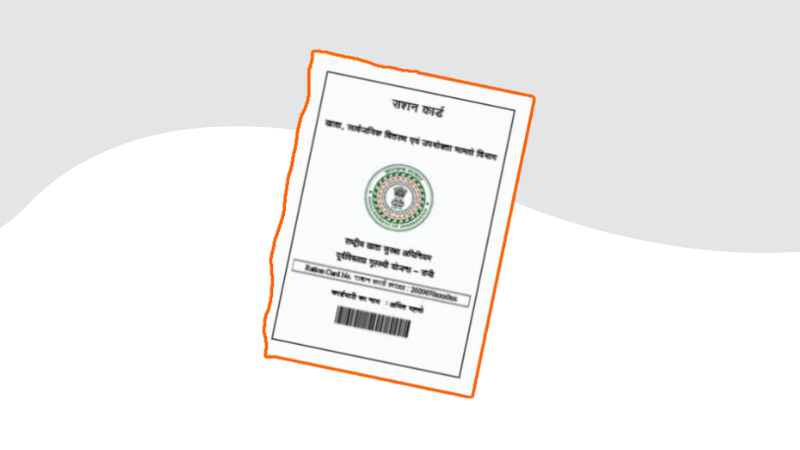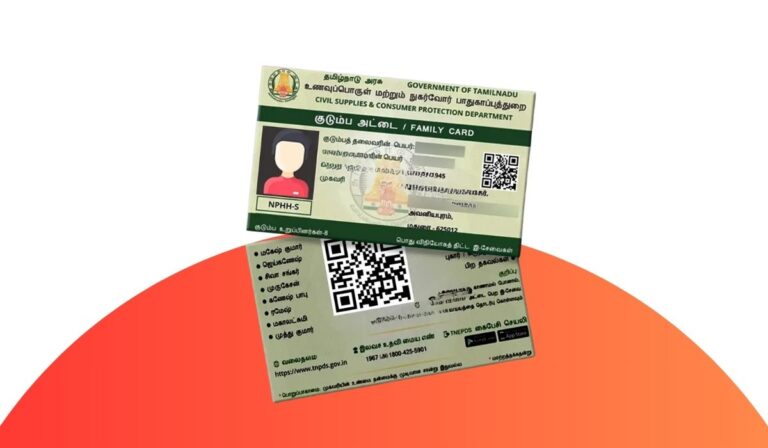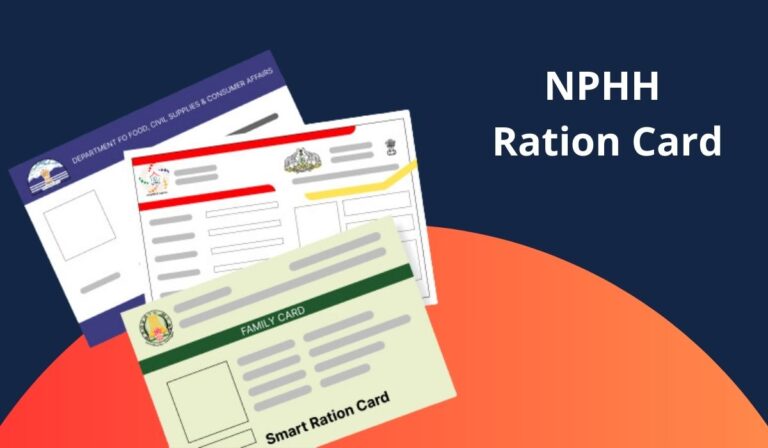In India, White Ration Cards, also known as D cards, are designated for citizens falling above the poverty threshold. These cards are allocated to individuals whose earnings are below ₹11,000 or families with an annual income exceeding ₹1 lakh. Eligibility for obtaining a White Ration Card extends to families owning a four-wheeler or possessing up to four hectares of irrigated land collectively.
What is a White Ration Card?
The White Ration Card is a form of identification and verification similar to other ration cards. It is issued to families who do not fall under the Below Poverty Line (BPL) category. Although it does not directly provide access to heavily subsidized staples, the White Ration Card holds significant importance in several ways.
It is considered an official document, much like a passport or voter ID, and can be used as proof of residence and identity. This allows White Ration Cardholders to open bank accounts and apply for government benefits such as senior citizen pensions or subsidies for school fees. Therefore, while not intended as a primary source of subsidized food, White Ration Cards can help individuals take advantage of various government initiatives.
White Ration Card Eligibility and Income Limit
The White Ration Card is provided to citizens who earn an annual income of ₹1 Lakh or more. It is also issued to families who have a member with a four-wheeler or if the family owns more than 4 hectares of irrigated land.
Benefits of Having a White Ration Card
Having a white ration card offers a plethora of benefits to the citizens. The card is issued to citizens who are considered APL (Above the Poverty Line) with an annual income of more than ₹1,00,000. This card enables citizens to avail of many benefits from the state government some of which can be checked in the section below:
- White cards function as officially recognised documents, similar to passports or voter IDs. This verifies your residence and identity, making them valuable for various purposes.
- While not a primary document, some regions might consider White Cards as secondary ID proof when applying for travel documents like passports.
- White cardholders are eligible to purchase specific essentials like rice, sugar, and kerosene at a subsidised rate, offering some financial relief.
- With White Cards, the cardholders citizens can easily access free medical assistance in specific hospitals.
- White Cards serve as proof of residence for various purposes like property transactions or obtaining driving licences (depending on regional regulations)
How to Get a White Ration Card?
A White Ration Card is an official document issued by the state government at a subsidised rate. The card entitles customers to purchase essential commodities such as food grains, sugar, and kerosene at subsidised rates. Getting a white ration card is easy and one can get it by applying online at the state government’s official website.
White Ration Card Application Process
- Step 1: Navigate to the official portal of the Department of Food and Civil Supplies, or visit your local ration card office.
- Step 2: On the website, locate and select the option to “Apply for a New Food Security Card.”
- Step 3: Download and print the application form for the White Ration Card.
- Step 4: Fill out the application by providing necessary details such as your full name, age, gender, names of parents, residential address, phone number, highest educational qualification, district, locality, information about family members, and the overall income of the household, among other required information.
- Step 5: Attach verified copies of essential documents, including residence proof, an Aadhaar card, and a recent passport-sized photo.
- Step 6: Present the filled-out form and any applicable fees at the designated submission centre.
| Also, read: How to Download E-Ration Card Online? |
| Also, read: How to Link Aadhaar with Ration Card |
List of Commodities Available with a White Ration Card
White ration cards, also known as honorary cards, serve a specific purpose. Primarily, they are issued to individuals who do not require subsidised food items like rice, sugar, salt, edible oil, spices, pulses, wheat, grains, gas, or kerosene from the government-run Public Distribution System (PDS). These cards function as official residence or identity proof documents. Some essential items like rice, sugar, and kerosene might be accessible to families holding APL (Above Poverty Line) ration cards.
White cards themselves do not provide access to these subsidised goods. Additionally, White cards can simplify the application process for senior citizen pensions and potentially expedite opening a bank account. Therefore, White cards address the need for identification and offer some secondary benefits, but they are not meant to provide access to subsidised food items from the PDS.
How to Check Your White Ration Card Status?
To monitor the status of your white ration card application online, follow these alternative steps:
- Step 1: Navigate to your state government’s official website.
- Step 2: Search for the section labelled ‘Public Distribution System (PDS)’ or ‘Ration card.’
- Step 3: Select the option for ‘check ration card status.’
- Step 4: Input your ration card number to view its current status displayed on your screen.
Also, read: How to Check Ration Card Application Status Online
Official Government Websites Issuing White Ration Card
Individuals willing to issue white ration cards can do the same by contacting the state government on its official website. One can apply for the white ration card online by completing the formalities. The following table can be checked to know about the official website link for all the states:
| State | Official Website |
| Uttar Pradesh | https://nfsa.up.gov.in/Food/citizen/Default.aspx |
| Madhya Pradesh | https://rationmitra.nic.in/ |
| Telangana | https://epds.telangana.gov.in/FoodSecurityAct/ |
| Tamil Nadu | https://www.tnpds.gov.in/ |
| Maharashtra | http://mahafood.gov.in/website/english/home.aspx |
| West Bengal | https://food.wb.gov.in/ |
| Odisha/Orissa | https://pdsodisha.gov.in/ |
| Bihar | http://epds.bihar.gov.in/ |
| Gujarat | https://dcs-dof.gujarat.gov.in/ |
| Andhra Pradesh | https://aepos.ap.gov.in/ePos/ |
| Haryana | https://haryanafood.gov.in/hi/ |
| Himachal Pradesh | https://epds.co.in/ |
| Karnataka | https://ahara.kar.nic.in/ |
| Punjab | https://epos.punjab.gov.in/ |
| Rajasthan | https://food.rajasthan.gov.in/ |
| Delhi(UT) | https://nfs.delhigovt.nic.in/ |
| Kerala | https://ecitizen.civilsupplieskerala.gov.in/ |
| Assam | https://nfsa.gov.in/State/AS |
Frequently Asked Questions
Ques: How does the white ration card differ from other ration cards?
Ans: The white ration card differs from the ration card as it is used for the identification process.
Ques: What is the income limit for applying for a white ration card?
Ans: The income limit for applying for a white ration card should not be less than ₹ 11,000 and not more than ₹1,00,000.
Ques: Can I check the status of my white ration card application?
Ans: One can check the status of my white ration card application by visiting the official website of the state government.
Ques: Where can I find the white ration card application form?
Ans: One can find the white ration card application form by visiting the official website of the state government or visiting the nearest ration card office.
Ques: What commodities are available to me with a white ration card?
Ans: The commodities available to a consumer with a white ration card are rice, sugar, salt, edible oil, spices, pulses, wheat, grains, gas, or kerosene.
Conclusion
In short, the White Ration Card is more than just a card in India; it’s a key to many government benefits. Think of it like a passport or voter ID—it proves who you are and where you live. Plus, it lets you buy necessary items at lower prices, which can help save money.
It’s really important to understand how the White Ration Card works. It’s not just about the discounts; it’s about understanding a system that helps people who need it most. This is why if you can get a White Ration Card, you definitely should. The perks are great—not just for buying things cheaper, but also for being part of a system that looks out for its citizens. So, if you’re eligible, applying for it is a smart move that can make life a bit easier.
Also, read:
- Types of Ration Cards in India
- What is the Antyodaya Anna Yojana (AAY) Ration Card?




